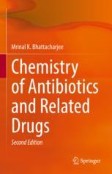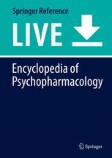Search
Search Results
-
Antibiotics That Inhibit Cell Wall Synthesis
Structure of the bacterial cell wall, the metabolic pathway for the biosynthesis of the cell wall, and various antibiotics affecting the different...
-

-
Antibiotics That Inhibit Cell Wall Synthesis
Structure of the bacterial cell wall, the metabolic pathway for the biosynthesis of cell wall, and various antibiotics affecting various stages of...
-

-
Rational Approaches to Antibacterial Discovery: Pre-Genomic Directed and Phenotypic Screening
After the discovery of antibacterial chemicals and antibiotics through the 1950s by empirical assays based on growth inhibition, methods gradually...
-

-
Aus Mikroorganismen hergestellte Arzneistoffe
Die Produktion von Arzneistoffen durch Mikroorganismen blickt auf eine lange Geschichte zurück: Man denke an die Gewinnung von Ethylalkohol aus...
-
Experimental Evaluation of Efficacy
Experiments offer the possibility of varying several conditions and thus of assessing the importance of particular technical details. Studies of the...
-
The covalent bond in selective toxicity
Although the majority of biologically active substances combine only loosely with receptors and are easily released by washing, a few agents combine...
-
Steps in the correlation of structure with biological action
The three best known sources of selectivity that are available for controlling uneconomic cells were outlined at the end of Chapter 1. Before going...
-
Antibakteriell wirksame Stoffe
Antibiotika sind Stoffe mikrobiologischer Herkunft, die andere Mikroorganismen in ihrem Wachstum hemmen oder zu ihrer Abtötung führen. Im Gegensatz...
-
The bacterial cell wall — a vulnerable shield
In the search for differences between bacteria and animal cells that could provide the basis for a selective antibacterial attack, one evident...
-

-
Structural Chemistry of Actinomycetes Antibiotics
Antibiotics, i. e., metabolic products of microorganisms which possess the capacity, in low concentration, of inhibiting the growth of, or...
-
D-Cycloserine and O-Carbamyl-D-serine
Alanine is a major component of the peptidoglycan (mucopeptide) and teichoic acid moieties of bacterial cell walls (Salton, 1964). Part of the...
-
Vancomycin
The antibiotic, vancomycin, was isolated in the Eli Lilly Company laboratories from a Streptomyces species found in soil obtained in Borneo and...
-
Enzymatic Reactions in Bacterial Cell Wall Synthesis Sensitive to Penicillins, Cephalosporins, and Other Antibacterial Agents
The purpose of the present account of enzymatic reactions sensitive to penicillins, cephalosporins and other antibacterial agents is to complement...
-
Arzneimittel aus Mikroorganismen
Kein Lebewesen existiert für sich allein; es ist stets ein Glied eines größeren Lebensraumes und von den benachbarten Lebewesen entweder in seiner...
-
Arzneimittel aus Mikroorganismen
Kein Lebewesen existiert für sich allein; es ist stets ein Glied eines größeren Lebensraumes und von den benachbarten Lebewesen entweder in seiner...
-
Ristocetin
Ristocetin is a fermentation product of Nocardia lurida (Grundy et al., 1957). The commercial preparation of this antibiotic, Spontin, is...
